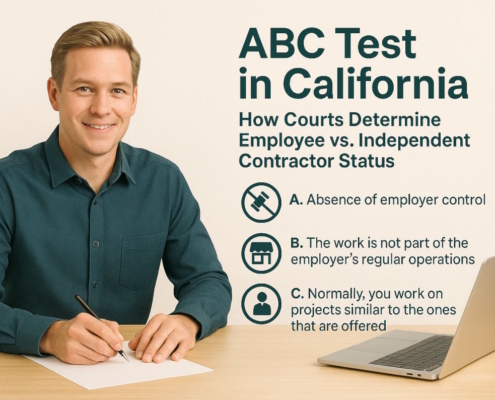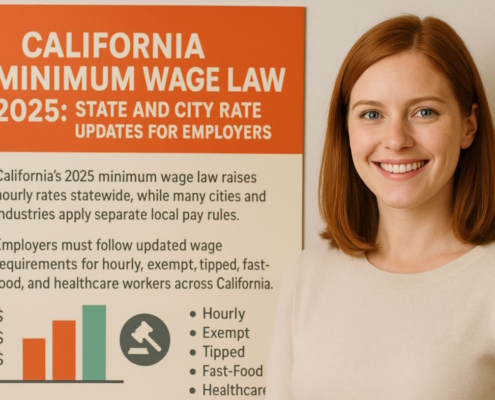What is an independent contractor?
An independent contractor is an individual or entity that provides services to another person, business, or organization under a contract or agreement. Unlike an employee, who works under the direct control and supervision of an employer, an independent contractor operates independently and is generally responsible for managing their own work and business affairs.
Independent contractors are typically hired for specific projects or tasks and are not considered employees of the hiring party. They maintain a higher level of autonomy and control over their work, including the methods and tools used to complete the job. They are often engaged on a temporary or project basis, rather than being employed on a long-term or permanent basis.
Key characteristics of an independent contractor include:
- Control: Independent contractors have the freedom to determine how they will accomplish the work assigned to them, as long as they meet the agreed upon deliverables or results. They have control over their working hours, location, and methods of completing the tasks.
- Financial arrangement: Independent contractors are typically paid and negotiated fee or project-based compensation for their services. They are responsible for their own taxes, insurance, and business expenses.
- Independence: Independent contractors generally operate as separate entities from the client or hiring party. They may have their own business name, website, and branding. They are not entitled to employee benefits like health care, paid time off, or retirement plans.
- Limited integration: Independent contractors are not integrated into the client’s organization in the same way as employees. They work on a contractual basis and are not subject to the same rules, policies, or management oversight.
What does it mean to be misclassified as an independent contractor?
Being misclassified as an independent contractor refers to a situation where a worker is categorized and treated as an independent contractor by a client or employer when, in fact, they should be classified as an employee under applicable labor laws. This misclassification can occur due to various reasons, such as intentional misclassification by the employer to avoid providing employee benefits and protection or a genuine misunderstanding of the legal criteria for determining employment status.
Misclassification as an independent contractor can have significant implications for both the worker and the employer. Here are some key points to consider:
- Employee protections and benefits: Employees are entitled to certain legal protections and benefits, including minimum wage, overtime pay, workers compensation, unemployment insurance, and protection against workplace discrimination. Independent contractors, on the other hand, do not have these same legal protections and benefits.
- Tax obligations: Employers are responsible for withholding and paying payroll taxes on behalf of their employees. Independent contractors, however, are typically responsible for paying their own self-employment taxes. Misclassifying employees as independent contractors can result in the employer evading their tax obligations.
- Legal consequences: Misclassification can lead to legal consequences for employers. Authorities such as labor departments and tax agencies may impose penalties, fines, or require back payment of taxes or benefits owed to misclassified workers.
- Dispute resolution: misclassified workers may challenge their classification by filing complaints or legal claims. They can seek remedies such as reclassification as employees, payment of back wages or benefits, and compensation for any harm suffered due to the misclassification.
It is worth noting that the criteria for determining whether a worker is an employee or an independent contractor can vary across jurisdictions. Various factors are typically considered, including the level of control exerted by the employer, the nature of the work relationship, and the degree of independence of the worker. If you suspect that you have been misclassified it is advisable to consult with an employment lawyer or relevant authorities in your jurisdiction to understand your rights and options.
Why is it important to be classified as an employee?
Being classified as an employee holds several important advantages and protections for workers. Here are some reasons why it is important to be classified as an employee:
Employees are afforded a wide range of labor rights and protections under employment laws. These include minimum wage laws, overtime pay, rest and meal breaks, protection against workplace discrimination, harassment and retaliation, access to workers compensation in case of work-related injuries, and unemployment insurance if they lose their job. These protections help ensure fair and safe working conditions and provide a safety net for employees.
Employees often have access to various benefits provided by their employers, such as health insurance, retirement plans, paid vacation and sick leave, parental leave, and other fringe benefits period these benefits can significantly contribute to an employee’s overall well-being, financial security, and work-life balance.
Employees generally have a more stable income compared to independent contractors. They receive regular paychecks, often with taxes and other deductions automatically withheld, providing a consistent and predictable income stream. Independent contractors, on the other hand, are typically paid on a project basis and may face greater income volatility.
As employees, individuals can benefit from the resources and support provided by their employers. This may include access to training and development programs, workplace equipment and tools, mentorship, and career advancement opportunities. Employers are invested in the growth and success of their employees, which can contribute to professional development and job security.
Further, employees have legal rights and recourse in case of workplace disputes or violations. They can file complaints, seek legal remedies, or participate in collective actions, such as class action lawsuits, to address issues related to wages, working conditions, discrimination, or other employment-related matters. Independent contractors generally have fewer legal protections and may face more challenges in asserting their rights.
Can a California employee sue for misclassification?
In California, an employee has the right to sue for misclassification if they believe they have been wrongly classified as an independent contractor. California has specific laws and legal tests that determine whether a worker should be classified as an employee or an independent contractor.
Under California law, the primary test for employment classification is the “ABC test,” which was established by the California Supreme Court in the Dynamex Operations West, Inc. v. Superior Court case in 2018. This test is used to determine if a worker is an independent contractor or an employee for the purposes of wage orders issued by the industrial welfare Commission, or IWC, and the California Labor Code.
The ABC test presumes that workers are employees unless all three of the following conditions are met:
- The worker is free from the control and direction of the hiring entity in connection with the performance of the work, both under the contract and in practice.
- The worker performs work that is outside the usual course of the hiring entity’s business.
- The worker is customarily engaged in an independently established trade, occupation, or business of the same nature as the work performed.
If a worker believes they have been misclassified as an independent contractor when they should be an employee, they can file a complaint with the California Labor Commissioner’s Office or take legal action by filing a lawsuit. By doing so, they can seek remedies such as free classification as an employee, recovery of unpaid wages or benefits, reimbursement of expenses, and potential penalties or damages.
It is important to note that misclassification cases can be complex, and their outcomes depend on the specific circumstances and evidence presented. If you believe you have been misclassified as an independent contractor in California, it is advisable to consult with an employment lawyer who specializes in California labor law to understand your rights and options.
Can you file a PAGA claim for employee misclassification?
A Private Attorneys General Act, or PAGA, claim can be filed for employee misclassification in California. PAGA allows employees to bring lawsuits on behalf of themselves and other aggrieved employees to recover civil penalties for violations of California labor laws. This includes violations related to employee misclassification.
Under PAGA, an aggrieved employee, acting as a private attorney general, can pursue penalties on behalf of the state of California for various Labor Code violations, including misclassification. The penalties were covered in a PAGA claim are typically shared between the aggrieved employees and the state.
To file a PAGA a claim for employee misclassification, the following steps are generally involved:
- Provide notice: The aggrieved employee must first provide written notice to the employer, the California Labor and Workforce Development Agency, and any affected employees, detailing the specific labor code violations, including misclassification.
- Waiting period: There is a mandatory waiting period of at least 65 days after providing notice before the employee can file the PA GA lawsuit. During this time, the LWDA has the opportunity to investigate the violations and decide whether to pursue action on its own.
- Lawsuit filing: If the LWDA does not pursue action or issues a notice to the employee stating it does not intend to investigate, the employee can proceed with filing the PAGA lawsuit in court. The lawsuit will seek civil penalties for the labor law violations, including misclassification.
- Litigation process: the PAGA claim will follow the normal litigation process, including discovery, settlement negotiations, and, if necessary, trial proceedings. If successful, the employee may be awarded civil penalties on behalf of themselves and other affected employees.
It is important to note that PAGA claims can be complex and require compliance with specific legal requirements. Therefore, consulting with an employment lawyer who is well-versed in PAGA and California labor laws is advisable if you are considering filing a PAGA claim for employee misclassification. They can provide guidance based on the specific circumstances of your case.
Can an employee file a federal lawsuit against their employer for misclassification?
An employee can file a federal lawsuit against their employer for misclassification, particularly if the misclassification involves violations of federal employment laws. While misclassification cases are often handled at the state level, certain federal laws provide protections and remedies for misclassified employees.
For example, the Fair Labor Standards Act, or FLSA, establishes minimum wage, overtime pay, and other employment standards at the federal level. If an employee is misclassified as an independent contractor and denied these protections, they may file a lawsuit under the FLSA to recover unpaid wages, overtime pay, and other applicable damages.
Meanwhile, the Family and Medical Leave Act, or FMLA, provides eligible employees with job protected leave for specific family and medical reasons. Misclassified employees who are wrongly denied FMLA leave due to their misclassification may bring a federal lawsuit to assert their rights under this law.
Various federal laws, such as Title VII of the Civil Rights Act of 1964, the Americans with Disabilities Act, and the Age Discrimination and Employment Act, prohibit workplace discrimination based on protected characteristics. If misclassification is accompanied by discriminatory treatment, employees may have grounds for a federal lawsuit alleging both misclassification and discrimination.
When considering filing a federal lawsuit for misclassification, it is important to consult with an employment lawyer who specializes in federal employment laws. They can evaluate your specific circumstances, assess the applicable laws, and guide you through the process of pursuing legal action at the federal level.































